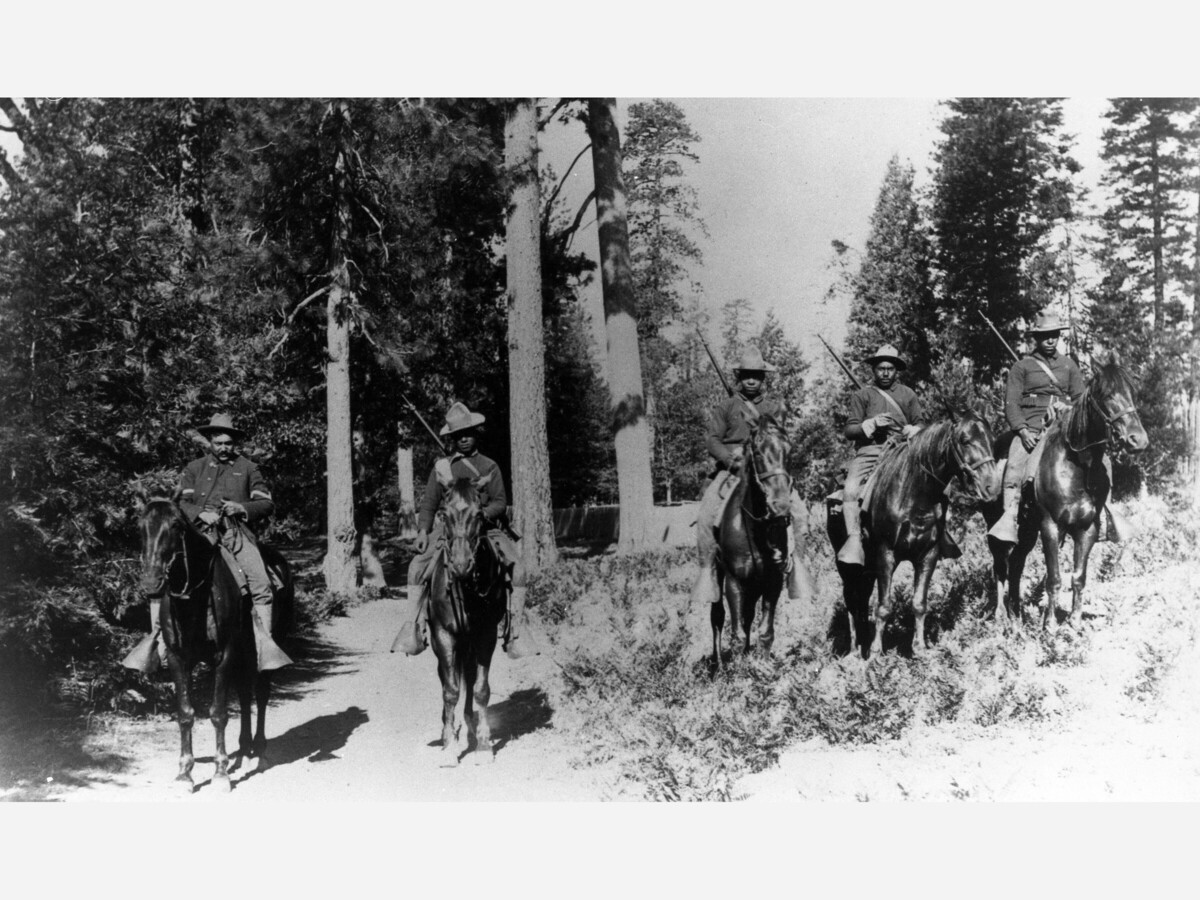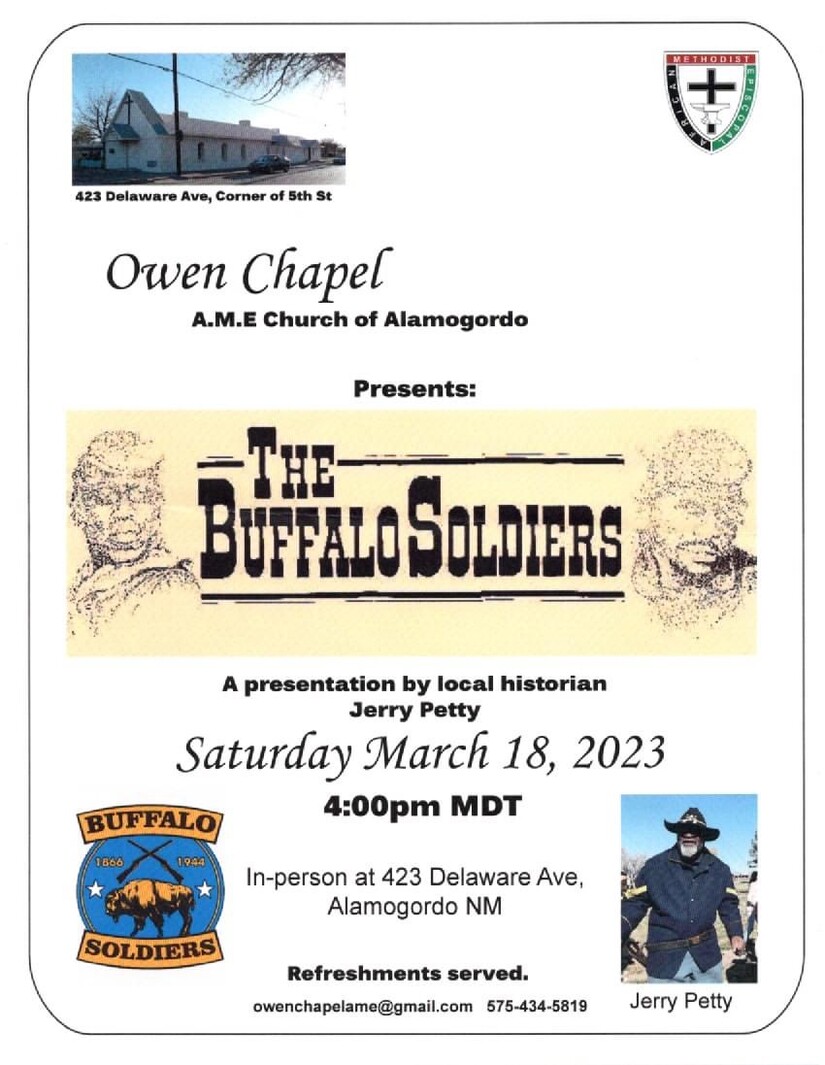Image


Alamogordo Proud history remembered…
March 18th at 4 pm Jerry Petty of the Texas Buffalo Soldier Association and local of Alamogordo will host a lecture on the Buffalo Solder at Owen Chapel AME 423 Delaware Street Alamogordo.
According to popular lore, Native Americans coined the term “Buffalo Soldiers” either because the soldiers’ dark curly hair resembled a buffalo mane or because the soldiers fought like the fierce Great Plains buffalo. Its origin notwithstanding, African American soldiers embraced the moniker by World War I when the 92nd Infantry Division adopted the buffalo as the symbol for its unit patch.
The regiments have been immortalized in popular culture through songs like reggae giant Bob Marley's “Buffalo Soldier,” television productions like 1997's Buffalo Soldiers starring Danny Glover, and in films like Spike Lee's Miracle at St. Anna, which chronicles the Buffalo Soldiers who served in the invasion of Italy in World War II.
Buffalo Soldiers originally were members of the 10th Cavalry Regiment of the United States Army, formed on September 21, 1866, at Fort Leavenworth, Kansas. This nickname was given to the Black Cavalry by Native American tribes who fought in the Indian Wars. The term eventually became synonymous with all of the African American regiments formed in 1866:
Although several African-American regiments were raised during the Civil War as part of the Union Army(including the 54th Massachusetts Volunteer Infantryand the many United States Colored TroopsRegiments), the "Buffalo Soldiers" were established by Congress as the first peacetime all-black regiments in the regular U.S. Army. On September 6, 2005, Mark Matthews, the oldest surviving Buffalo Soldier, died at the age of 111. He was buried at Arlington National Cemetery
Another little-known contribution of the Buffalo Soldiers involved eight troops of the 9th Cavalry Regiment and one company of the 24th Infantry Regiment who served in California's Sierra Nevada as some of the first national park rangers. In 1899, Buffalo Soldiers from Company H, 24th Infantry Regiment briefly served in Yosemite National Park, Sequoia National Park, and General Grant (Kings Canyon) National Parks.
U.S. Army regiments had been serving in these national parks since 1891, but until 1899, the soldiers serving were white. Beginning in 1899, and continuing in 1903 and 1904, African American regiments served during the summer in the second and third oldest national parks in the United States (Sequoia and Yosemite). Because these soldiers served before the National Park Service was created in 1916, they were "park rangers" before the term was coined.
A lasting legacy of the soldiers as park rangers is the campaign hat they wore (popularly known as the Smokey Bear hat). Although not officially adopted by the Army until 1911, the distinctive hat crease, called a Montana peak, (or pinch) can be seen being worn by several of the Buffalo Soldiers in park photographs dating back to 1899. Soldiers serving in the Spanish–American War began to re-crease the Stetson hat with a Montana "pinch" to better shed water from the torrential tropical rains. Many retained that distinctive crease upon their return to the U.S. The park photographs, in all likelihood, show Buffalo Soldiers who were veterans from that war.
To learn more or to see a replica of the outfits worn by the Buffalo Soldiers join Mr Petty for an informative and educational lecture March 18th.
